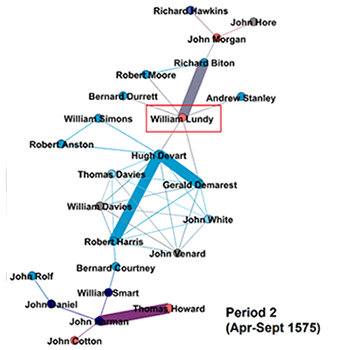Understanding the Early Modern English Coastal Trading Community
A case study of network prosopography
DOI:
https://doi.org/10.25517/jhnr.v6i1.101Keywords:
Network prosopography, early modern, Tudor, maritime history, seafaring communitiesAbstract
While a vibrant historiography surrounds early modern English seafaring, the vast majority of work has focused on the mercantile and maritime elite. Indeed, low-level seafarers, whose work significantly contributed to the maritime industry on which the English economy was so dependent, have been largely overlooked. In particular, a lack of insight into the lives and careers of English coastal traders has led to a skewed perspective of maritime logistics and of the socio-economic make-up of Tudor society. This omission can be partially credited to a lack of qualitative sources pertaining to the lives and careers of low-level seafarers. Although there is a rich seam of quantitative data available through the national customs, few have looked to these sources to understand the social and economic dynamics of the coastal trading community.
This paper explores the possibility that a combined approach, utilising prosopography and Social Network Analysis, can reveal the ways in which small- and medium-scale merchants and shipmasters forged connections and established lasting businesses in the face of political and economic instability. Acting as a test case for future study, this paper will propose a methodological approach for the examination of a social and economic group which is often overlooked in the broad historiography, but for whom a large body of valuable quantitative data survives. By combining traditional historical methodologies with Social Network Analysis, this paper offers a new perspective on English maritime history.

Downloads
Published
How to Cite
Issue
Section
License
A Creative Commons Attribution-NoDerivatives 4.0 (CC BY-ND 4.0) license applies to all contents published in JHNR. While articles published on JHNR can be copied by anyone for noncommercial purposes if proper credit is given, all materials are published under an open-access license with authors retaining full and permanent ownership of their work. For details please consult the Open Access and Copyright Notice.

